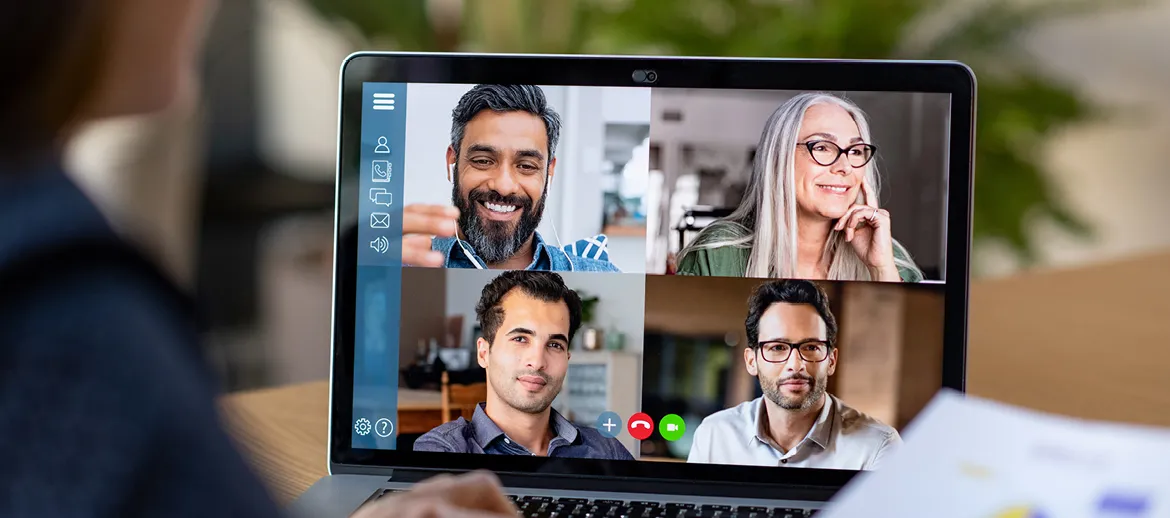Video conferencing is no longer just a convenience—it’s a necessity. Teams work remotely, classes are held online, and families connect through video chats. But with this shift, one major issue has surfaced—security. When meetings aren’t secure, private conversations can become public nightmares.
Data leaks, eavesdropping, unauthorized access, and online disruptions are more common than many think. If you’re not taking video conferencing security seriously, you might be putting more than just your reputation at risk. Fortunately, by following a structured list of smart practices, you can shield your online meetings from these threats.
This in-depth guide covers top video conferencing security tips that help you stay protected every time you host or attend a virtual meeting.
Why Is Video Conferencing Security So Critical Today?
The use of platforms like Zoom, Microsoft Teams, and Google Meet has skyrocketed. While they provide convenience and speed, they’ve also become prime targets for cybercriminals. Here’s why securing your virtual meetings is no longer optional:
- Hackers exploit default settings
Many users stick with default configurations, making it easier for attackers to guess IDs or passwords.
- Sensitive information is often discussed
Meetings often involve company data, financial details, strategies, or client discussions. A leak can cause major damage.
- Compliance and legal issues
Failing to secure online meetings can result in legal penalties, especially under privacy regulations like GDPR or HIPAA.
- Brand and personal reputation
A security breach can shake stakeholder trust or cause personal embarrassment.
By applying the security tips listed below, you take control of your digital meetings and significantly reduce these risks.
1. Pick a Platform with Strong Security Features
Choosing the right platform is the first and most important step. Not all tools offer the same level of protection. Before signing up, check if the platform provides:
- End-to-end encryption
- Regular security patches and updates
- Waiting room features
- Host controls for muting, locking rooms, and removing users
- Two-factor authentication (2FA)
- Limited data retention policies
Stick to trusted platforms with transparent privacy policies and a history of quick response to security flaws.
2. Avoid Default Meeting IDs and Use Randomized Links
A common mistake is using the same meeting ID or personal room repeatedly. This makes your meeting predictable and vulnerable. Here’s what you should do:
- Always generate a new meeting ID for every session.
- Avoid using personal meeting rooms for external or large meetings.
- Share your meeting ID and password privately, never on social media.
Using dynamic meeting links adds a crucial layer of unpredictability that frustrates potential intruders.
3. Lock Meetings After All Participants Join
Once all expected attendees are in, lock the meeting. This feature, available on most platforms, blocks anyone else from joining, even if they have the link. It’s one of the simplest and most effective ways to prevent “Zoombombing” or disruptions.
Hosts should make locking the room a habit after checking the participant list.
4. Set Strong, Unique Passwords for Every Meeting
Password protection is your first defense wall. Avoid using simple or repeated passwords. Here are a few tips:
- Use a mix of uppercase, lowercase, numbers, and symbols.
- Avoid using company names or common words.
- Change meeting passwords regularly.
Also, ensure participants know not to share passwords publicly or forward them carelessly.
5. Enable Waiting Rooms or Lobbies
Waiting rooms allow the host to screen participants before letting them in. This is crucial when:
- Hosting public webinars
- Inviting large or unknown audiences
- Discussing confidential topics
As a host, review every name before admitting. If someone seems unfamiliar, message them privately for confirmation or deny access.
6. Manage Screen Sharing Settings
One of the fastest ways for a meeting to go wrong is by allowing open screen sharing. Unchecked screen sharing can lead to:
- Accidental display of private files
- Offensive content from uninvited users
- Malware sharing through pop-ups or fake links
To reduce risk:
- Set screen sharing to “host only” by default.
- Enable sharing only when needed and only for trusted attendees.
- Turn it off after use.
7. Keep Your Software and Devices Up to Date
Outdated software is a security gap waiting to be exploited. Developers release updates to fix bugs and patch vulnerabilities. If you don’t install them, you’re exposed.
- Enable automatic updates for all conferencing apps.
- Update your browser and operating system regularly.
- Restart apps after updates to apply changes.
This applies to both hosts and attendees—security is a group effort.
8. Use Multi-Factor Authentication (MFA)
Passwords can be stolen or guessed. Multi-factor authentication adds another layer. Even if a hacker gets your password, they still can’t log in without the second step, such as:
- A code is sent to your phone
- An authentication app
- A fingerprint scan (for supported devices)
Enable MFA on all your video conferencing accounts, and encourage your team or organization to do the same.
9. Disable File Transfer (Unless Needed)
Allowing file transfers within video calls can pose a security threat. Malicious files can be sent quickly and executed before you notice. If your platform allows it, disable this feature for general use.
Instead, use cloud storage services or secure email to share documents. This also gives you more control over file access.
10. Educate All Participants on Security Basics
Security training should not be limited to IT teams. Everyone using video conferencing tools must understand:
- How to set up meetings securely
- Why not share links or passwords
- How to spot suspicious activity during meetings
- When to report an issue
Hold periodic training or send out quick security tip guides. A well-informed team is your strongest defense.
11. Watch for Suspicious Behavior During Meetings
Always keep an eye on the participant list. Be alert for:
- Strange usernames
- Background noise from unknown sources
- Unusual file sharing or messaging
If someone seems suspicious, mute them, disable video, and remove them if necessary. Most platforms also allow you to report abuse after the session.
12. Use Secure and Private Networks
Avoid joining sensitive meetings using public Wi-Fi. If you must, take precautions:
- Use a Virtual Private Network (VPN)
- Don’t open unknown links or download files during the call
- Disable file sharing on your device while on public networks
Encourage employees and clients to use secure networks when attending your meetings.
13. Monitor and Control Meeting Recordings
Recording meetings can be helpful, but it also increases the risk of data leaks. Follow these guidelines:
- Record only when needed
- Inform all attendees before starting
- Store recordings in secure, access-restricted folders
- Avoid recording meetings that include sensitive personal or financial information
Review and delete unnecessary recordings regularly.
14. Protect Chat Features from Misuse
Chats during meetings can be hijacked for phishing or spamming. Prevent this by:
- Limiting chat access to host-only or one-on-one as needed
- Disabling links in chat if possible
- Monitoring chat activity during the session
You can also save chat logs for review if an incident occurs.
15. Use Meeting Time Limits and Automatically End Idle Sessions
Shorter meetings reduce exposure time. Set a specific start and end time. If your platform supports it, enable auto-end settings to shut down idle or unused meetings.
This limits the window for someone to sneak in or exploit a still-running session.
16. Review Platform Security Policies and Updates
Stay up to date with your platform’s security releases. Subscribe to newsletters or alerts. Many platforms notify users when vulnerabilities are fixed or new tools are added.
As a host, knowing your platform’s features helps you use them effectively and confidently.
Conclusion
Securing your video calls doesn’t have to be complicated. Following these video conferencing security tips ensures your virtual meetings stay private, productive, and free from disruption. Whether you’re a small business owner, a corporate team leader, or a remote worker, staying alert and using the right tools makes all the difference.
Take these tips seriously. Don’t leave your meetings open to threats. A few small changes can prevent serious problems. Make every online session secure, smooth, and stress-free.
Ready to take control of your online meetings? Apply these video conferencing security tips now to protect your privacy, your data, and your peace of mind.


